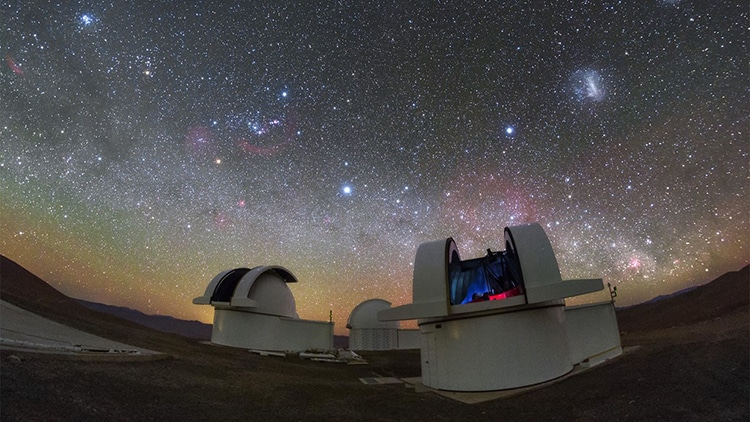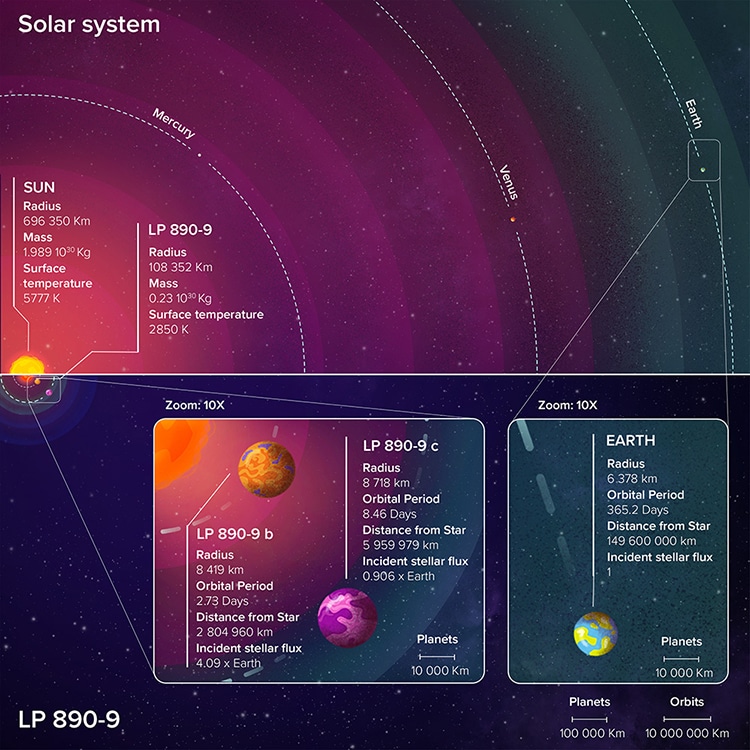Newly Discovered ‘Super-Earth’ Planet May Be Able to Support Life

Photo: ESO/P.Holárek
The search for extraterrestrial life is largely dependent on finding other planets which can sustain life, like our own Earth. Inhabitable planets are the Holy Grail of space exploration. While discovering and documenting new planets is actually rather commonplace these days—given NASA's amazing technology—some finds are still big news. A team of scientists at the University of Liège in Belgium has announced the discovery of two new super-Earth planets, one of which may have an environment suitable for life.
New planets are often first spotted by NASA's genius Transiting Exoplanet Survey Satellite (TESS). TESS sits in space where it trains its gaze upon distant stars. The device registers the light each star omits and notes any deviations. These “dips” in light indicate a body passing between the star and TESS. These early exoplanet sightings can provide a lot of information and can be further investigated using Earth-based telescopes.
The University of Liège researchers were pursuing one of these TESS-spotted exoplanets when they encountered another new celestial body. They were able to do so through their advanced telescope nicknamed SPECULOOS (Search for habitable Planets EClipsing ULtra-cOOl Stars). Both exoplanets turned out to be super-Earths. Super-Earths are larger than Earth but lighter than icy planets like Neptune. The first planet spotted, known as LP 890-9b, is 30% larger than Earth and orbits its own sun in 2.7 days. The second was dubbed LP 890-9c (or SPECULOOS-2c). It is 40% larger than Earth with an orbit of 8.5 days.
Francisco Pozuelos, of the Institute of Astrophysics of Andalusia and co-author of a recent paper on the planets, indicated in a statement that SPECULOOS-2c could potentially sustain life. While it is only 3.7 million miles from its sun—versus Earth's 93 million mile distance—the planet's environment may be able to maintain liquid water. “Although this planet orbits very close to its star, at a distance about 10 times shorter than that of Mercury around our Sun, the amount of stellar irradiation it receives is still low, and could allow the presence of liquid water on the planet's surface, provided it has a sufficient atmosphere,” Pozuelos says.
“This is because the star LP 890-9 [the exoplanet's sun] is about 6.5 times smaller than the Sun and has a surface temperature half that of our star.” While it may be presently unclear whether life exists on the super-Earth, the find itself is exciting.
A team of scientists at the University of Liège has announced the discovery of two new super-Earth planets, one of which may have an environment suitable for life.
It is 40% larger than Earth with an orbit of 8.5 days around its sun; it is much closer to its sun than Earth is to ours, but still may be able to maintain liquid water.
h/t: [NPR]
Related Articles:
Two Astrophotographers Team Up To Create Detailed Color Photo of the Moon
Scientists Develop Motor To Make Oxygen on Mars To Support Astronaut Life
JWST Captures Possibly the Most Perfect Einstein Ring Galaxy Ever Seen
Watch This Video to Take a Warp Speed Flight From Earth to the Cartwheel Galaxy
READ: Newly Discovered ‘Super-Earth’ Planet May Be Able to Support Life


0 Commentaires